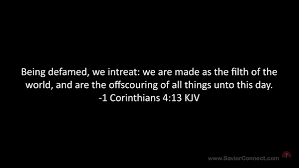
The very brief answer is that after a person dies, his soul rises to Heaven for judgment before the Divine Tribunal.
However, Jewish tradition does not spell out precisely what occurs to the soul at the time of death and what he experiences before and during his ascent to Heaven.
Even so, a fairly clear image emerges from many passing statements of the Sages on the matter. (And not surprisingly, these fairly closely resemble the testimony given by the many people who have reported having Near Death Experiences (NDEs).
Immediately upon a person’s death, Kabbalistic sources state that the soul is granted a glimpse of God’s Divine Presence.
The soul feels a deep sense of serenity, of being at peace with itself — as if it is preparing to return home.
Jewish literature records cases of great rabbis, immediately prior to their deaths, announcing the souls which had come to accompany them to the next world (e.g. Talmud Brachot 28b). Likewise, many pious people, Jews and non-Jews, have died mentioning the names of their parents or other close relatives who had come to greet them. No doubt, the moment of death is very frightening for a soul.
The presence of familiar faces greatly helps smooth the transition and calm the person down.
At that point, one would expect that the soul would then rise straight to Heaven for judgment.
- What happens right after we die?
Keep Reading
But interestingly, that does not appear to occur immediately. There is a clear assumption in Jewish literature that the deceased’s soul is present for quite some time after death — certainly until the burial and quite possibly until its body fully decomposes.
The Talmud states that the deceased’s soul is aware of everything spoken in the presence of its body, and it records a debate if this is true until the burial or until the body decays (Shabbat 152b).
It likewise states (152a) that the soul mourns over its own body during the entire week of mourning (shiva), and that for the entire first year after death the soul goes back and forth, alternating between Heaven and its buried remains.
Finally, at the conclusion of the year of mourning, the worthy find total peace in Heaven (152b).
Many of the laws of caring for the body and making the funeral preparations are predicated on the assumption that the deceased’s soul is present – and cares deeply how its body is treated and how he is eulogised.
For example, people may not perform any mitzvah (unrelated to the burial) in the presence of the body – because the deceased would be pained seeing others doing a mitzvah it can no longer do.
They may also not speak of unrelated matters. In addition and needless to say, any sort of willful neglect of the body or damage done to it – such as through an autopsy or cremation (both of which are strictly forbidden by Jewish law), causes horrific agony to the soul.
Rabbi Aryeh Kaplan explains what transpires as follows. After its death the soul requires time to become oriented. It is unaccustomed to living without a body in a wholly spiritual state.
It is aware of its surroundings not through physical sight – no doubt receiving much more input than it did during its lifetime, and it requires time to adjust to this. It looks to the world for its grounding, and is naturally drawn to the object most familiar to it of all – its body.
Thus, the soul is assumed to remain in the proximity of its body throughout the funeral procession, and funerals are observed with this in mind.
Likewise, the soul is terribly pained viewing its body decay.
The Talmud states that a worm in a corpse is as painful to the deceased as a needle entering the body of a living person (Brachot 18b).
This actually serves as a partial atonement for the deceased’s sins, and is known as the punishment of “chibut ha’kever”, literally, “the knock of the grave.”
Rabbi Kaplan continues that no doubt the degree to which the deceased is drawn after its body depends greatly on how physical the person was during his lifetime. If a person’s body, its comforts and its pleasures were very significant to him, his soul will not pull itself away from its body until it fully decays or even beyond.
If, however, a person was more spiritual during his lifetime, his body and its fate will matter much less to him.
The Talmud likewise states that the death of the righteous is comparable to “drawing a hair from milk” (see Mo’ed Katan 28a and Brachot 8a), whereas a painful death is as tearing out “thorny branches from sheep’s wool.”
Rabbi Yisroel Reisman (leading contemporary rabbi, Brooklyn, New York) made a related observation based on a passage in the Talmud (Brachot 18b).
The Talmud relates the story of a girl who passed on young and whose body was buried wrapped in a certain material which prevented it from decaying.
As a result, she was not able to ascend to Heaven at all. Her body was intact and she could not fully take her leave of it.
Rabbi Reisman likewise pointed out that the ancient Egyptian practice of mummification may well have been due to their obsession with witchcraft (as the magicians (chartumim) who were so significant in Pharaoh’s court).
By not allowing bodies to decay, they realised that more departed souls would “hang around” in the physical world, not being able to ascend to Heaven.
And their presence would give the magicians the abilities they sought to tamper with the natural order.
In terms of the actual ascent to Heaven, I’m not familiar with a graphic description of this in Jewish literature.
Very generally, an angel brings the soul to heaven, accompanied by his relatives










